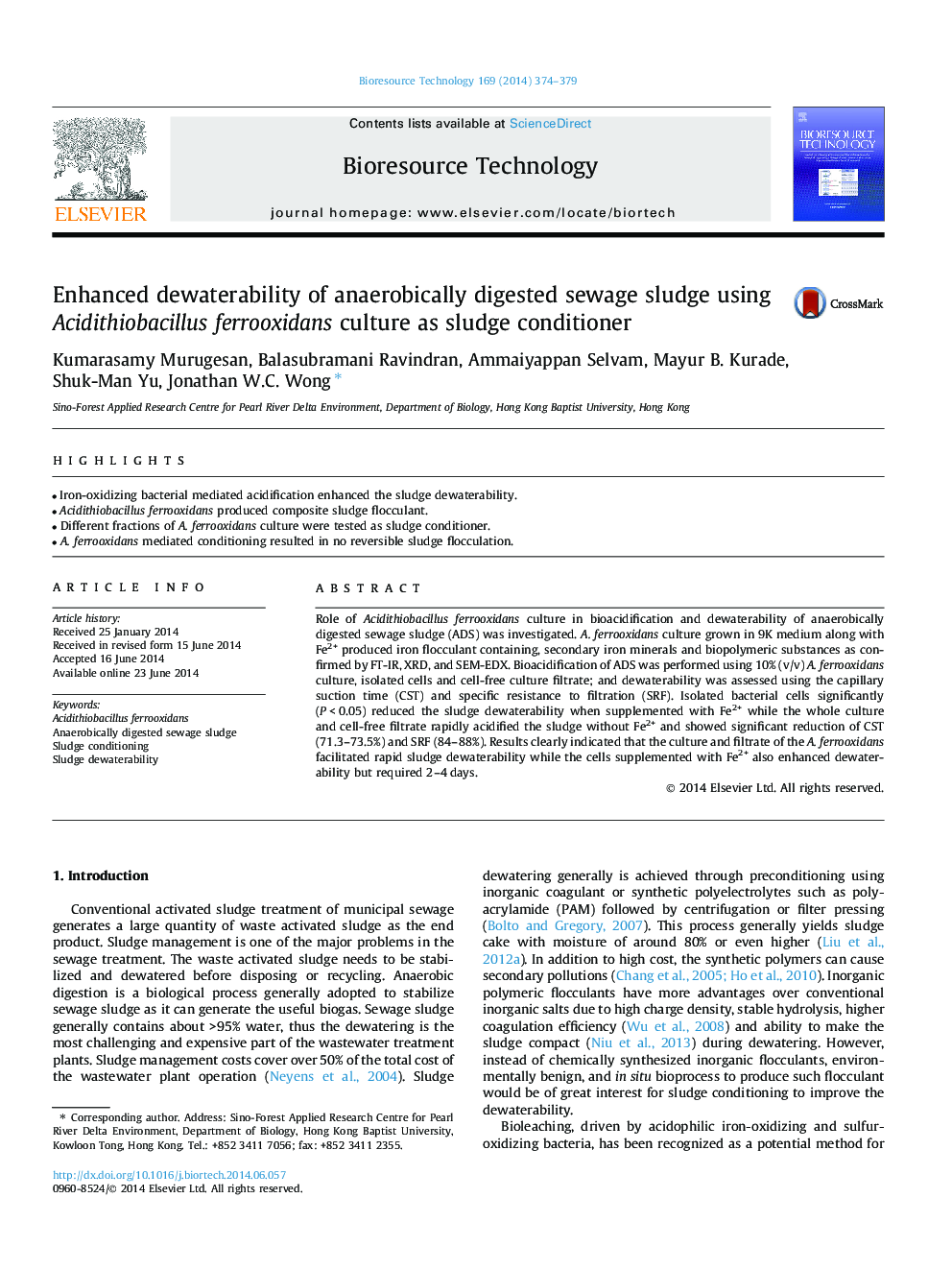| Article ID | Journal | Published Year | Pages | File Type |
|---|---|---|---|---|
| 680612 | Bioresource Technology | 2014 | 6 Pages |
•Iron-oxidizing bacterial mediated acidification enhanced the sludge dewaterability.•Acidithiobacillus ferrooxidans produced composite sludge flocculant.•Different fractions of A. ferrooxidans culture were tested as sludge conditioner.•A. ferrooxidans mediated conditioning resulted in no reversible sludge flocculation.
Role of Acidithiobacillus ferrooxidans culture in bioacidification and dewaterability of anaerobically digested sewage sludge (ADS) was investigated. A. ferrooxidans culture grown in 9K medium along with Fe2+ produced iron flocculant containing, secondary iron minerals and biopolymeric substances as confirmed by FT-IR, XRD, and SEM-EDX. Bioacidification of ADS was performed using 10% (v/v) A. ferrooxidans culture, isolated cells and cell-free culture filtrate; and dewaterability was assessed using the capillary suction time (CST) and specific resistance to filtration (SRF). Isolated bacterial cells significantly (P < 0.05) reduced the sludge dewaterability when supplemented with Fe2+ while the whole culture and cell-free filtrate rapidly acidified the sludge without Fe2+ and showed significant reduction of CST (71.3–73.5%) and SRF (84–88%). Results clearly indicated that the culture and filtrate of the A. ferrooxidans facilitated rapid sludge dewaterability while the cells supplemented with Fe2+ also enhanced dewaterability but required 2–4 days.
